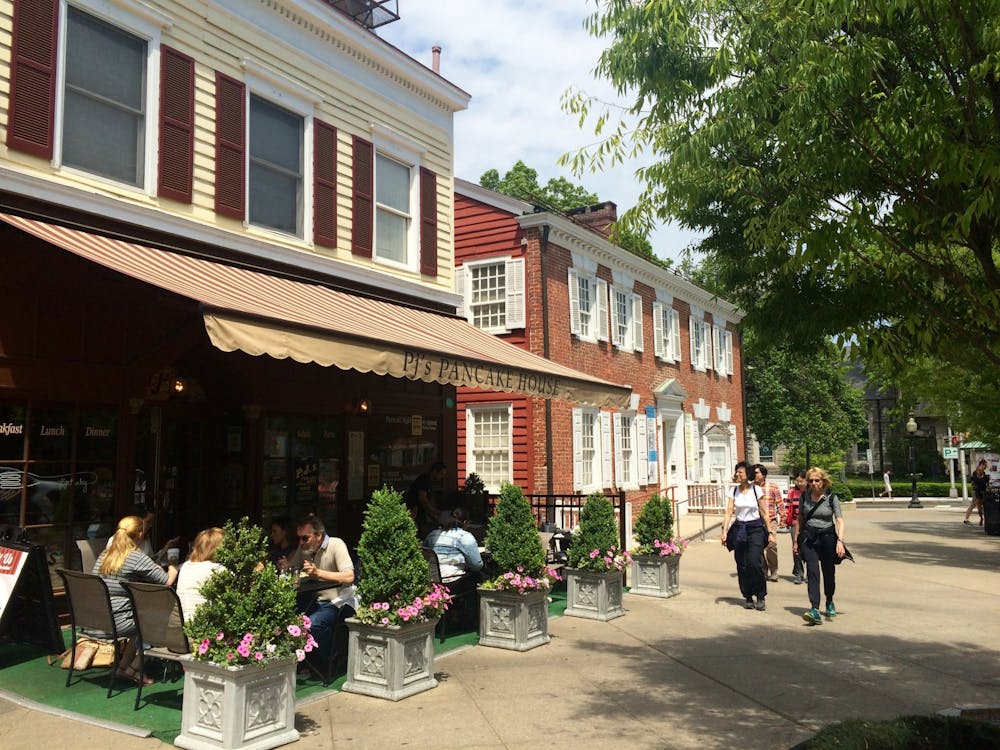Pierre Auguste Renoir: his name itself is as alluring as his artwork, being simultaneously familiar and foreign. He belongs to the canon of 19th century auteurs studied in introductory art courses, but he is less discussed and dissected than the more vivid personalities, the philanderers, the combatants, the psychos. Renoir's young girls playing instruments, reading, or dancing are self-consciously lovely; and it doesn't surprise me at all that he once remarked, "Why shouldn't art be pretty? There are enough unpleasant things in the world."
I agree with him there. I love looking at "pretty" things. That's why I watch The O.C., after all. Other excusesit's well-written, it's a comment on our materialistic society—are about as convincing as Mischa Barton's ability to convey anything but utter narcissism. But that's okay because she's pretty. But the harder I try to like Renoir's prettiness, the more it makes me physically recoil. I'm not sure why, but I completely, irreversibly, and perhaps innately hate Renoir.
Maybe it's that I consider him implicitly misogynistic: his subjects are objects, always posing instead of really doing anything, with no purpose but to satisfy the male gaze. Renoir's women seem so frozen, so absent of any personality. Even his dancers appear lethargic, as if they do not have the strength to perform the leaps demanded of them.
Or maybe I hate Renoir because I find his palette of pinks and blues more appropriate for a child's birthday party than for high art. But I'm not really convinced.
Whatever the reason for it, my Renoir repulsion has never posed a big problem for me, since anyone who would disapprove of my hatred of the artist is not the sort of person I would want to spend much time with. Still, I am frustrated by the mental dissonance it has created for me, as my aversion to Renoir does not accurately mirror my nature or my other interests in the least.
No, practically everything that characterizes a Renoir work should be attractive to me, given my tastes in other arenas. His dancers, so similar to the Degas ballerinas that I love, should bring to my mind my happy childhood, filled with ballet recitals and lofty ambitions to dance with the Pacific Northwest Ballet. His subject matter, rife with caprice, should remind me of scenes I love in other art forms: Maggie Tulliver cutting off her hair in an outburst of irresponsibility or Amelie's tricks with a garden gnome. His comprehensive representations of the social and the feminine, too, should appeal to someone as fond of Edith Wharton as I am. I should love his idlers dining out or lounging by trellises: the culture of leisure fascinates me, makes me envious of a time when such a lifestyle was possible, and prompts me to wonder if it still is.
I remember when I first came face to face with a Renoir. I was on a trip to the Metropolitan Museum of Art as a child, a luxury for a girl from the middle of Texas. My older sister pointed to Renoir's Jeunes filles au piano, which depicts two young girls intensely scrutinizing a piece of sheet music. The older one, her brown hair falling abundantly over a red dress, looks over her blonde sister's shoulder as the latter holds the page with one hand and presses the piano keys deliberately with the other. Vases, wall hangings, curtains, and thick sofas suggest a home both lived in and preserved, as though it deserves equally to be the subject of a painting and the setting for a domestic tea party.
"That could be us," my sister remarked, and I could not disagree. Everything about that painting, down to the ribbons in the girls' hair, was like it was ours. Annie and I used to amuse ourselves with piano-playing and singing, neither of which we did with any ability, which made our attempts all the more "precious" in the eyes of the adult onlookers. We went a step further, putting on extravagant theatrical performances in our living room. Being older, Annie always played the lead roles: she was both Snow White and the evil queen, while I, from the adjacent room, had to play the voice behind the mirror. I learned from my sister, eventually discovering the joy of being the center of attention, so that by the time she had moved on to lip gloss and scrunchies, I had assigned the role of second mouse to my younger friend, playing the Pied Piper myself.

When I think back to those days of playacting and piano, my hatred of Renoir comes into sharper focus. Maybe, after all, it began that day at the Met. I realize now that I don't want to have to see myself and my sister in Jeunes filles au piano. My childhood elicits a very specific sensation for me: a mixture of fondness, confusion because of vague recollections and sadness at its brevity. I don't want some stodgy academic painter trying to give his own interpretation of that experience, intruding into a realm where he has no place. Of all my possessions, my memories are the only ones that are truly mine. They cannot be corrupted by time or by the strife that necessarily comes with time. And certainly not by a painter who does not understand. It's not just prettiness; it's a life.








